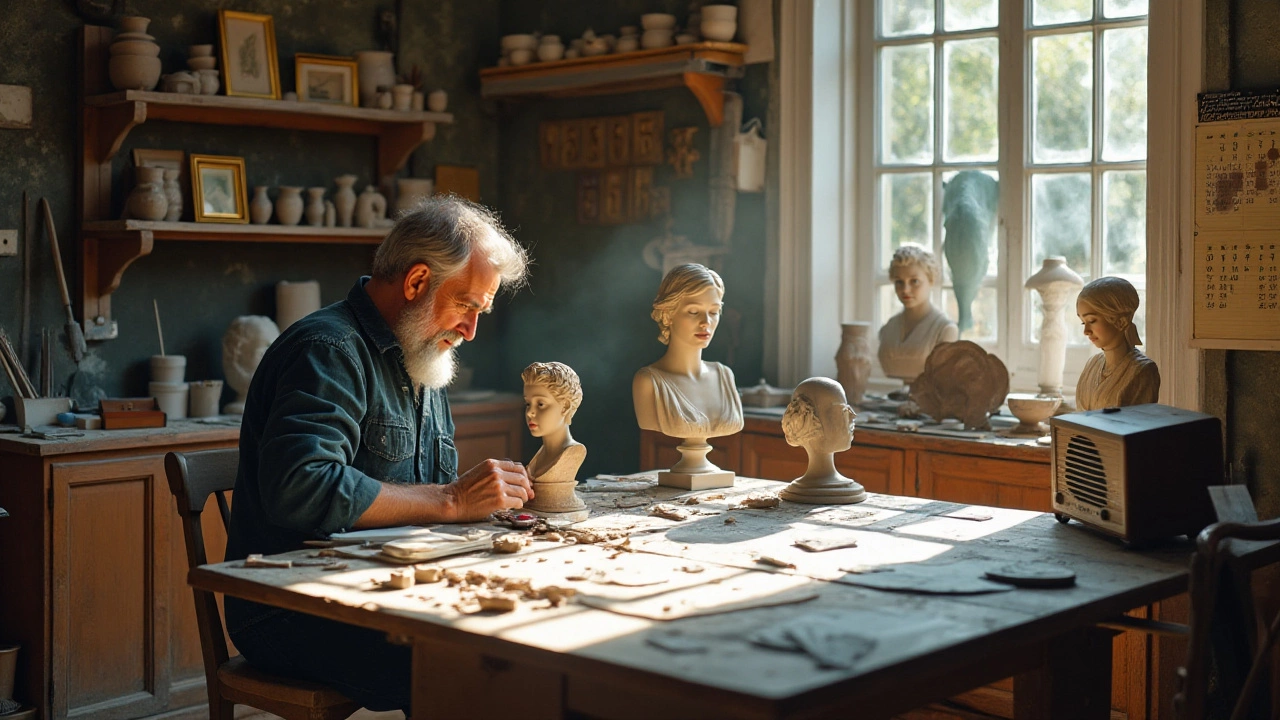Sculpture Market Insights: Trends, Prices & Buying Tips
Whether you’re a collector, a budding artist, or just curious about what’s hot in the world of 3‑D art, the sculpture market has a lot to offer. Prices can jump, new materials pop up, and styles shift faster than you might think. Below are the most useful facts to help you understand where the market is heading and how you can get the best bang for your buck.
Current Trends Shaping the Sculpture Market
First off, contemporary pieces that blend traditional techniques with modern tech are stealing the spotlight. Think bronze casts that incorporate LED lights or wooden forms finished with resin. These hybrid works often command higher prices because they’re seen as innovative and limited‑edition.
Second, sustainability is becoming a selling point. Artists are re‑using scrap metal, reclaimed wood, and even recycled plastics. Buyers love the story behind a piece that’s both eco‑friendly and eye‑catching, and the market is rewarding this niche with steady demand.
Third, the rise of online galleries has widened the buyer pool. You can now browse sculptures from London to Los Angeles without leaving your couch. This global reach pushes up price transparency – you’ll see exactly how much similar works sell for, which helps you negotiate better.
How to Buy or Create Affordable Sculptures
If you’re on a budget, start with the cheapest materials that still look professional. Plaster, air‑dry clay, and even concrete mix can be shaped into impressive forms without breaking the bank. A recent guide showed that a small concrete bust can cost under £30 in raw material, plus a bit of sandpaper for finishing.
Beginners should stick to simple projects at first. Easy ideas like stacked stone cairns, basic wire armatures, or small clay figurines let you practice techniques without heavy investment. Once you’re comfortable, you can experiment with layered glazing or mixed media to add depth.
When buying, always ask for the artist’s provenance and any certificates of authenticity. Even a modestly priced piece can increase in value if the artist’s reputation grows. Look for limited runs – a sculpture numbered 1 of 20 will typically hold its price better than an open‑edition print.
Don’t forget to factor in shipping and insurance. Heavy sculptures need proper packaging, and many galleries now offer insurance options during transit. A small extra cost now can save you big headaches later.
Finally, keep an eye on auction results. Sites that track sales show you which styles and materials are climbing in price. If you notice a surge in demand for, say, terrazzo floor pieces, that could be a hint to explore that medium yourself or consider adding one to your collection.
Bottom line: the sculpture market rewards creativity, story, and smart buying. By staying aware of current trends, choosing affordable materials, and doing a bit of homework before you purchase, you can enjoy great art without overpaying. Happy sculpting or hunting!

4 Jan 2025
Pricing a sculpture is a nuanced art, intertwining materials, size, artist's renown, and market demand. Every aspect from craftsmanship to current market trends plays a role in determining the worth of unique sculpture pieces. Newcomers to art collecting or even artists themselves must navigate these elements to set or understand fair prices. Having a clear breakdown of these factors assists individuals in making informed decisions.
Continue reading...
